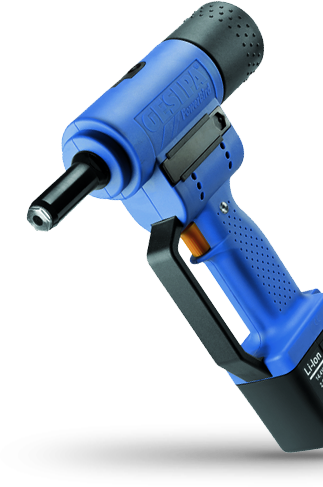Blind rivet
processing
tools
Manual tools – Battery-powered setting tools – Pneumatic setting tools – Automatic setting tools


GESIPA® specialises in adapting the fasteners and riveting tools it develops and produces in-house to suit the precise requirements of specific components. In addition to this, riveting tools with process monitoring can guarantee that connections are of a high quality as required and document this over time. GESIPA® riveting tools never fail to impress with their minimal wear,
short processing times and long service life. They are extremely cost-effective and guarantee maximum value to our customers. As we never stop trying to improve, all ongoing repairs are checked, documented and assessed internally. We then use the data collected in our ongoing efforts to optimise GESIPA® processing tools.
